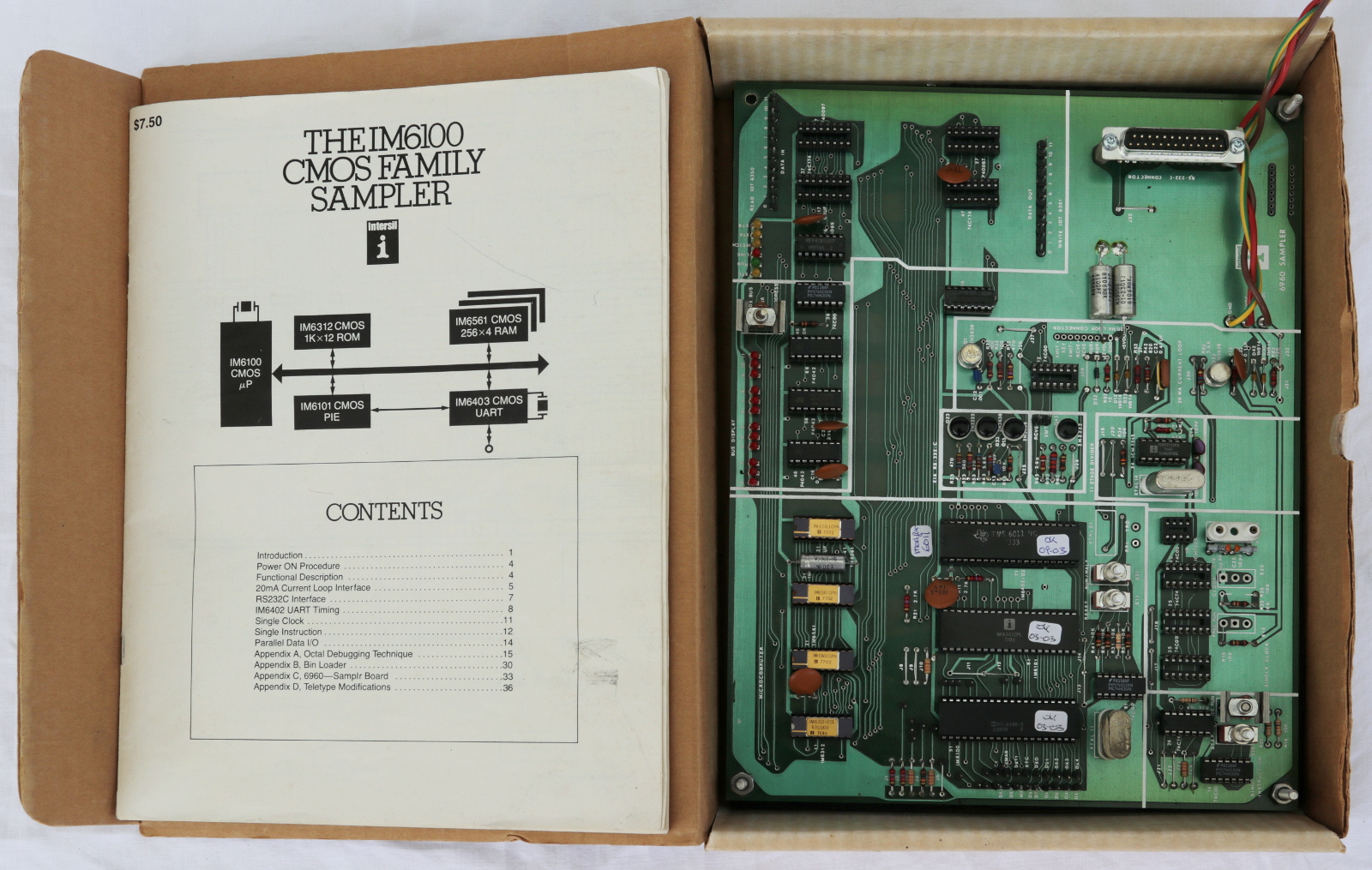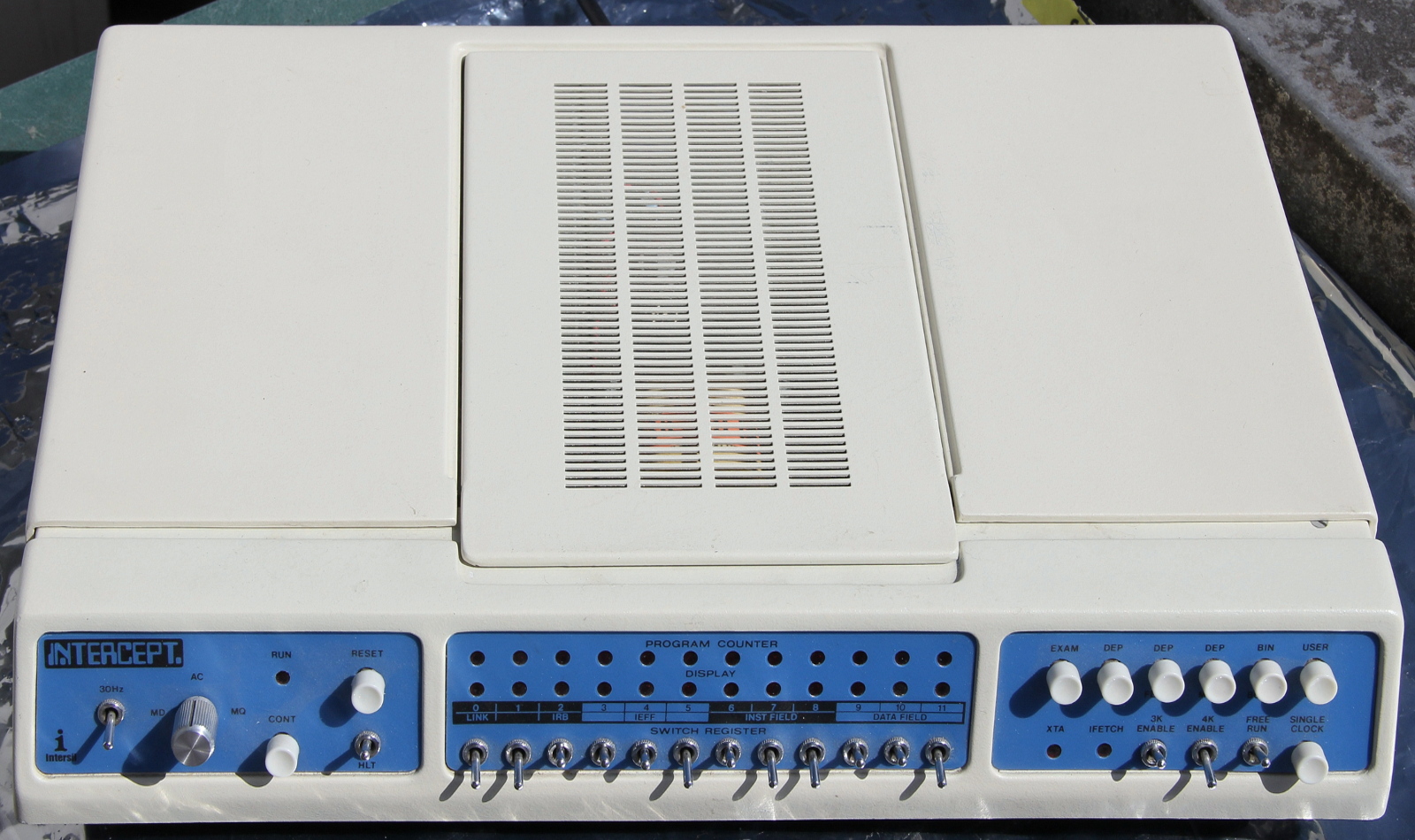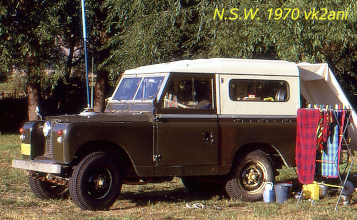PDP-8 on a chip: the INTERSIL IM6100 and HARRIS HD6120
Preface: A bit of history (for more details see the many web resources!)
When DEC started thinking about a small desktop version of its PDP-8 to provide a cost-effective WPS-8 wordprocessing unit, they teamed up with INTERSIL to design a CMOS processor chip that implements the PDP-8 instruction set. The result - which formed the base of the first DECstation in a VT52 box (1978) - was the IM6100 (first out 1975). It was capable of supporting a basic 4k PDP-8 configuration alone, but needed an additional c hip IM6102 for memory management up to 32k. The family included also a peripheral controller IM6101, a parallel I/O IM6103, a serial interface IM6402, IM6403, a 64x12 RAM IM6512, a 1024x12 PROM IM6312 and other memory chips.
INTERSIL wanted to make use of the large software base of all the PDP-8s used in labs, production control, test systems etc. for the low power CMOS IM6100 family and produced development systems for students, design and production engineers. These products included the a sampler board (see below), different board and box versions of the INTERCEPT development system and finally the INTERCEPT III based LSI-8 OEM computer system targeted at PDP-8 users. While the chips found use in low power systems including military applications with HARRIS HM6100 as second source, the endeavour was eventually not successful and ended about 1982.

My 6100 Sampler board in its original box, built ~1980 and retested 2003 - now in the Computer Museum Stuttgert.

My Intercept III, had a missing CPU card and was thus never used - now back in the US.
DEC followed 1980 the VT78 with the DECmate aka VT278 in a VT100 case using the new HD6120 chip by HARRIS, which, among other things, integrated the memory controller. The HD6121 was the new peripheral controller. The DECmates II (1982), III (1984) and III+ (1985) were the last small systems produced using the PDP-8 architecture. Unfortunately they were not designed fully compatible to the PDP-8 I/O structure and available industrial software needed to be modified - not very popular of course. The CMOS PDP-8 chips themselves appear to have been used a few years longer in control applications as working pulls can still occasionally be obtained from e.g. China (got 4 working units in 2017)!
End of story? No way: in the late 90ies Bob Armstrong decided to design a PDP-8 compatible single board computer SBC6120 around the HD6120 using modern components and he created his own softwaretool BTS6120. The result of this effort runs e.g. OS/8 and its programs such as FORTRAN, BASIC, PASCAL or games, is a great success and has many happy builders and users.
My own SBC6120 units are described on other pages. The application notes were scanned from paper copies I had since the late 70ies.
